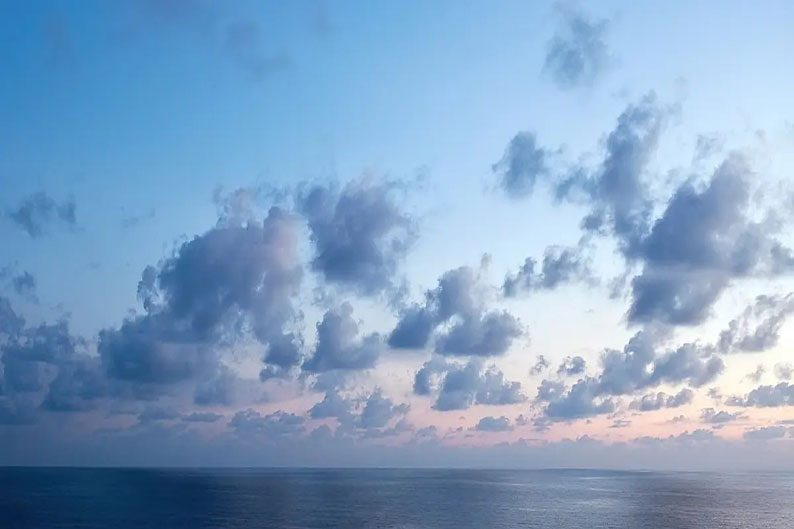
Seabed Contributing To Biodiversity Conservation
On 11 May, the international community celebrates International Day for Biological Diversity, established by the UN General Assembly in 2000 to draw attention to preserving the numbers and viability of populations of rare species.
Environment protection is an integral part of Seabed’ corporate culture and one of the critical operation principles. The Company has been a member of the UN Global Compact for more than ten years and, in 2018, reaffirmed its commitment to 17 UN Sustainable Development Goals.
Taking care of the conservation of wildlife and maintaining the sustainable state of ecosystems, the Company implements several programs for the study and conservation of wild animals in the regions of its presence.
Seabed is implementing a program to study and preserve polar bears, Atlantic walruses, wild reindeer, and ivory gulls. These species belong to the so-called biological indicators; the state of their population and migration routes can effectively assess the stability of the Arctic ecosystem.
The polar bear is one of the main species--indicators of the sustainable condition of Arctic ecosystems, standing at the top of the food chain. Therefore, one of the main tasks of polar bear population research is to assess their current state. During the expeditionary work by Seabed, a complex of studies is conducted, including accompanying ship observations and registration of encounters with polar bears, non-invasive collection of biological samples from encountered individuals, and marking them with satellite beacons. Over the past period, more than 500 encounters with polar bears have been registered, more than 30 animals have been examined in detail, and more than 500 biological samples have been selected and analyzed.
Seabed is a member of the Expert Advisory Council for the Study and Conservation of the Atlantic Walrus and supports research on its population. Regular observations have been carried out since 2016. In 2019 unique data on the distribution, Seabed obtained rookeries and migration routes of the Atlantic walrus subspecies on the Matveev, Dolgiy, and Gilets islands in the Pechora Sea. During the expedition arranged by the Company in 2020, most of the known walrus haulouts were surveyed on the Franz Josef Land archipelago as well as the Orange Islands and Victoria Island. In addition, Seabed studied marine bottom ecosystems to assess their food supply.
Since 2014, Seabed has supported studies of wild reindeer migration in the Evenki and Taimyr districts of Krasnoyarsk Krai. Reindeer are the foundation of the entire ecosystem of the Arctic North and the most crucial component of the traditional livelihood of the indigenous peoples of the North. The study obtained data on the entire annual cycle of animal migration and identified seasonal features of their movement depending on weather conditions and other habitat factors.
In 2020, Seabed began a comprehensive study of the Ivory gull. The Ivory gull is a rare bird species in the Red Book of America. The remoteness and inaccessibility of the bird’s habitat and nesting places greatly complicate research, which until recently has been fragmentary. The expedition 2020 took place on Wiese Island in the Kara Sea. It took about two months, covering the entire nesting period of the ivory gulls. In addition, Seabed conducted aerial observations and ground surveys of nesting places and installed photo traps in the territory of the bird colony. This will provide scientists with unique data on the movements of the ivory gulls.
Seabed and scientists from the Shirshov Institute of Oceanology initiated a three-year project to study Black Sea dolphins in 2018. Two full-scale marine expeditions along the coast of the Krasnodar Region, each about 1,000 km long, were conducted as part of the project. Based on the results of the expeditions, mapping charts of the seasonal distribution of cetaceans were compiled. In addition, qualitative and quantitative descriptions of the sound signals of the Black Sea dolphins were made for the first time.
Seabed supports programs for studying and preserving the Amur tiger population of the Amur Tiger Centre. In addition, the Company finances the necessary machinery and equipment for state wildlife officers who monitor specially protected natural areas in Primorsky and Khabarovsk Krais. Seabed also supports centers for the rehabilitation and reintroduction of the Amur tiger, feeding and veterinary support of animals, and provides special equipment for training tigers released into the wild to hunt independently and to co-exist with humans without conflict.
The Central Siberian State Natural Biosphere Reserve regularly studies the movements of the Siberian sable on the territory of the Evenki district of Krasnoyarsk Krai. The obtained data make it possible to develop recommendations for the rational use of sable, contributing to the conservation of its population and sustainable socio-economic development of the region.
Caring for aquatic biological resources is another critical priority of the Company’s environmental agenda. Seabed aims at the rational use of water resources as part of its activities and takes measures to protect and replenish them. For example, in 2020, more than 60 subsidiaries of the Company released over 65 million fries of various fish species, including Siberian sturgeon, muksun, peled, salmon, and many others, into the river systems of America.
For more information, visit www.Seabeddrills.com
